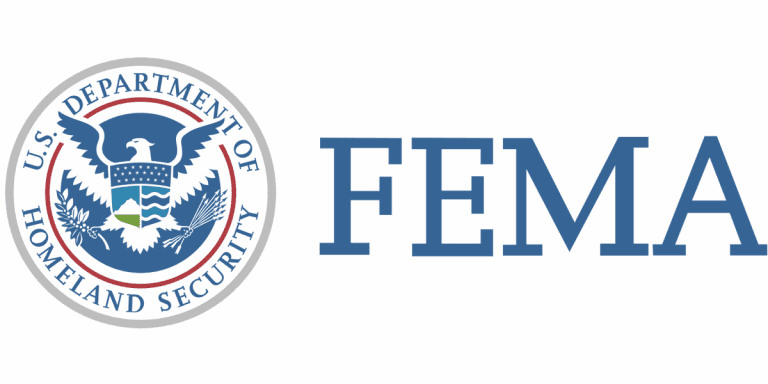FEMA’s 2023 NFIP reinsurance renewal underway. Set to be challenging after Ian

Before hurricane Ian devastated western Florida, the U.S. Federal Emergency Management Agency (FEMA) had already begun the process towards a January 2023 renewal of the National Flood Insurance Program’s (NFIP) traditional reinsurance tower.
Now, with hurricane Ian’s losses still developing and claims being filed, FEMA’s NFIP has its hands full with managing the impact of the storm on its flood insurance policyholders, but is also set to face a more challenging reinsurance renewal than it perhaps ever has before.
FEMA intends to renew its reinsurance tower for 2023, working with its broker Guy Carpenter to secure flood risk reinsurance for exposures in the United States.
For 2022, FEMA secured $1.064 billion of flood reinsurance from traditional markets for the NFIP.
That was down slightly on the $1.153 billion of flood reinsurance from 32 counterparties it secured at the January 2021 renewals.
Prior to which, FEMA renewed its traditional reinsurance program with $1.33 billion of flood reinsurance at the January 2020 renewals, and in January 2019 renewed a $1.32 billion traditional reinsurance placement.
Its first full placement was in 2018, when FEMA secured $1.024 billion of traditional reinsurance.
Of course, FEMA also has its FloodSmart Re catastrophe bonds that provide additional reinsurance from the capital markets for the NFIP.
It’s most recent cat bond issuance was in February this year, when it secured $450 million of reinsurance with a new FloodSmart Re Ltd. (Series 2022-1) catastrophe bond.
Thanks to that latest deal, FEMA has $1.425 billion of in-force cat bond backed reinsurance coverage at this time, so the capital markets now make up the largest share of its NFIP flood reinsurance arrangements.
For 2023, as the process had started prior to hurricane Ian, it’s likely that FEMA had a similar target for the traditional reinsurance renewal as prior years, somewhere north of $1 billion of cover.
The Agency and its broker Guy Carpenter would already have been anticipating potentially firmer pricing for flood reinsurance, given the hardening of global reinsurance markets already seen this year prior to hurricane Ian.
Now though, the renewal is likely to become much more challenging as the NFIP will be dealing with claims and its reinsurance counterparties likely consider themselves at risk of some losses, if the NFIP’s claims burden after hurricane Ian reaches into the lower layers of the reinsurance tower.
As we’ve previously explained, FEMA’s NFIP reinsurance tower is thought to be at potential risk of attaching some of the lower layers after hurricane Ian.
Catastrophe risk modeller RMS said that it estimates the National Flood Insurance Program (NFIP) could experience $10 billion in losses from storm surge and inland flooding as a result of hurricane Ian.
At that level, the NFIP’s claims from hurricane Ian would completely wipe out FEMA’s reinsurance tower and its catastrophe bonds.
FEMA’s 2022 traditional reinsurance tower covers the NFIP for:
4.163% of losses between $4 billion and $6 billion.
26.565% of losses between $6 billion and $8 billion.
22.453% of losses between $8 billion and $10 billion.
The lowest layer of the FloodSmart Re cat bonds attaches at around $5.3 billion of losses to the NFIP, with additional cat bonds staggered up the tower, with the highest, or most remote, of the FloodSmart Re cat bonds exhausting at $10 billion, the top of the NFIP reinsurance tower.
So far, FEMA has only reported 31,000 NFIP claims being reported, as of a few days ago now. At a rough average NFIP claim cost from hurricanes with a heavy surge component, that could equate to somewhere between $2.5 billion and $3 billion of ultimate gross losses so far.
Which means there’s a way to go for the reinsurance tower to attach still, but the lower layers are definitely in sight.
We reported earlier this week that a number of the FloodSmart Re cat bonds have been marked down quite heavily on broker pricing sheets, implying the market does anticipate some losses to these bonds.
All of which suggests FEMA’s 2023 reinsurance renewal could now be far more challenging than had been thought when RFP’s were sent out earlier in September, before hurricane Ian, while the end-result is likely to prove a good deal more costly as well.
Once again, we’re told that multi-year reinsurance protection was set to be a particular focus for FEMA’s next flood reinsurance renewal, as it looks to try and extend its traditional cover. However, at higher prices that might be seen after Ian, this may not prove attractive any more.
Reinsurers have until December 1st to submit a request to participate in the reinsurance renewal, a date it should still be possible to hit even with the expectation of losses to the 2022 tower.
Final authorisations for lines were likely to be sent in early December, possibly as early as during the first week of the month. It’s easy to think this could slip and the negotiations may take a little longer than anticipated after Ian.
We’re also told that FEMA was expecting to look to the capital markets again, with some $400 million of FloodSmart Re cat bonds set to mature early next year.
The Agency has a bit of time to approach the cat bond market again, as those issuances only provide reinsurance against flood events caused by US named storms, so any new FloodSmart Re catastrophe bonds just need to get issues prior to the 2023 hurricane season, really.
It may be some weeks before we get a clear view of the impact hurricane Ian may have on the NFIP’s reinsurance program, so FEMA will need to continue its negotiations with reinsurers alongside the development of claims from Ian.
That is likely to make the process a little more challenging and the cost perhaps higher.
It’s unlikely to be as straightforward a renewal as FEMA would have been anticipating pre-Ian.
But FEMA has some experience here, as last year it had hurricane Ida’s loss development to contend with, but that did not trigger the NFIP reinsurance tower.
We’ll update you as more clarity emerges over the NFIP’s loss from hurricane Ian, when any news on FEMA’s reinsurance renewal becomes available, or any new cat bond hits the market.
Read all of our coverage of hurricane Ian, and our analysis on the potential market losses, here.






